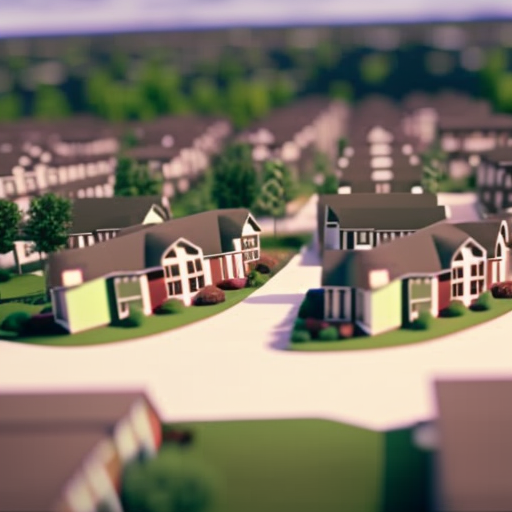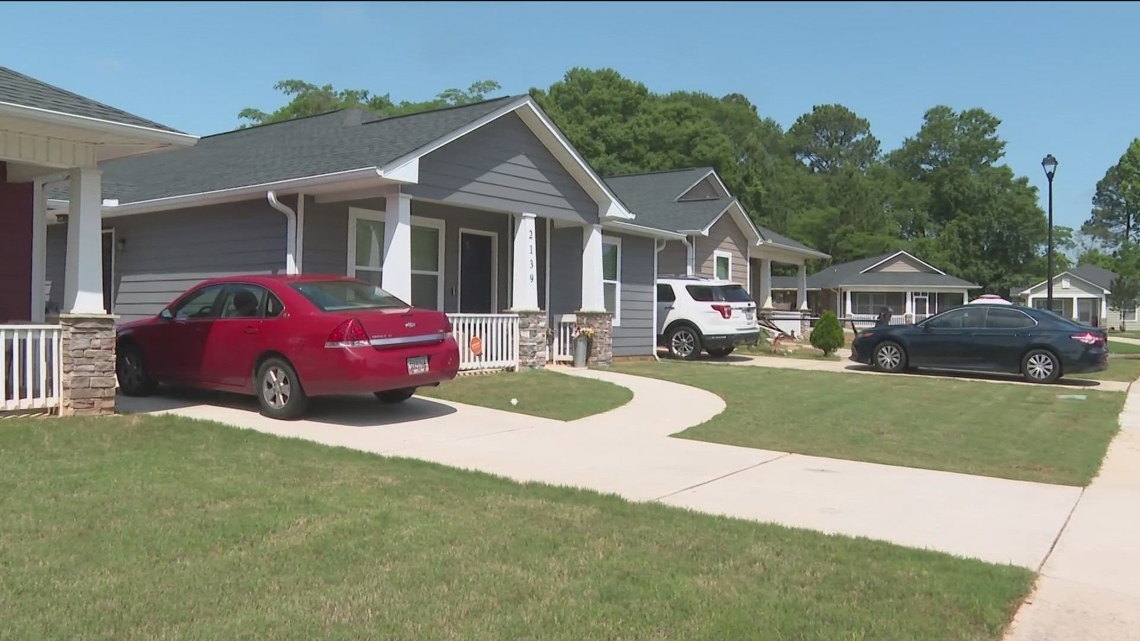
Sustainable Development Goals (SDGs) and Affordable Housing in Lovejoy, Georgia

Introduction
Sen. Jon Ossoff and Southern Crescent Habitat for Humanity have announced the development of new affordable housing neighborhoods in Clayton County, Georgia. This initiative aligns with the Sustainable Development Goals (SDGs) set by the United Nations to ensure access to safe and affordable housing for all.
New Affordable Housing Neighborhood in Lovejoy
The latest neighborhood is located in Lovejoy, Georgia, specifically on Rockspray Court. Currently, 28 houses are ready for occupancy, with 17 families prepared to move in. This development aims to address the pressing issue of affordable housing in the region.
Impact on Families
Tanjills Sawyer, one of the future homeowners, expressed her gratitude for the opportunity to have affordable housing. She emphasized that it means she can comfortably pay the mortgage without compromising her ability to afford basic necessities like groceries and transportation. Sawyer, a bus driver who lives paycheck to paycheck, previously struggled to make ends meet due to high rent payments.
Addressing Statewide Affordable Housing Challenges
Sen. Ossoff acknowledges that affordable housing is a statewide problem in Georgia. He believes that having a safe and clean home is crucial for families, especially those with children. However, the cost of housing often makes it unattainable for many families. This affordable housing project in Clayton County, backed by $500,000 in federal funding, aims to expand the availability of affordable housing in the metro Atlanta area and across the state.
Affordability and Zero-Interest Loans
All the houses in the Rockspray neighborhood will be priced under $300,000, ensuring affordability for families. Additionally, the loans provided will have zero interest, further easing the financial burden for homeowners. This approach aligns with the SDGs’ objective of promoting inclusive and sustainable economic growth.
Creating Generational Wealth
Tanjills Sawyer expresses her hope that more families can experience the relief and reality of affordable homeownership. She believes that by creating generational wealth through homeownership, families can break the cycle of financial instability and provide a better future for their children.
Future Developments
Sen. Ossoff stated that this affordable housing neighborhood in Lovejoy is just one of many similar projects planned for the metro Atlanta area. The commitment to addressing the affordable housing crisis remains a priority, aligning with the SDGs’ goal of ensuring sustainable cities and communities.
Conclusion
The collaboration between Sen. Jon Ossoff, Southern Crescent Habitat for Humanity, and other stakeholders demonstrates a commitment to achieving the SDGs, particularly Goal 11: Sustainable Cities and Communities. By providing affordable housing options and promoting economic stability, this initiative contributes to building a more equitable and sustainable future for all.
For more information on the affordable housing initiative, click here.
SDGs, Targets, and Indicators
1. Which SDGs are addressed or connected to the issues highlighted in the article?
- SDG 1: No Poverty – The article discusses the importance of affordable housing for families who struggle to make ends meet.
- SDG 11: Sustainable Cities and Communities – The article mentions the need for expanding the availability of affordable housing in metro Atlanta and across the state.
2. What specific targets under those SDGs can be identified based on the article’s content?
- SDG 1.4: By 2030, ensure that all men and women, in particular, the poor and the vulnerable, have equal rights to economic resources, as well as access to basic services, ownership, and control over land and other forms of property, inheritance, natural resources, appropriate new technology, and financial services, including microfinance.
- SDG 11.1: By 2030, ensure access for all to adequate, safe, and affordable housing and basic services and upgrade slums.
3. Are there any indicators mentioned or implied in the article that can be used to measure progress towards the identified targets?
- Indicator 1.4.2: Proportion of total adult population with secure tenure rights to land, with legally recognized documentation and who perceive their rights to land as secure, by sex and type of tenure.
- Indicator 11.1.1: Proportion of urban population living in slums, informal settlements, or inadequate housing.
4. Table: SDGs, Targets, and Indicators
| SDGs | Targets | Indicators |
|---|---|---|
| SDG 1: No Poverty | Target 1.4: By 2030, ensure that all men and women, in particular, the poor and the vulnerable, have equal rights to economic resources, as well as access to basic services, ownership, and control over land and other forms of property, inheritance, natural resources, appropriate new technology, and financial services, including microfinance. | Indicator 1.4.2: Proportion of total adult population with secure tenure rights to land, with legally recognized documentation and who perceive their rights to land as secure, by sex and type of tenure. |
| SDG 11: Sustainable Cities and Communities | Target 11.1: By 2030, ensure access for all to adequate, safe, and affordable housing and basic services and upgrade slums. | Indicator 11.1.1: Proportion of urban population living in slums, informal settlements, or inadequate housing. |
Copyright: Dive into this article, curated with care by SDG Investors Inc. Our advanced AI technology searches through vast amounts of data to spotlight how we are all moving forward with the Sustainable Development Goals. While we own the rights to this content, we invite you to share it to help spread knowledge and spark action on the SDGs.
Fuente: 11alive.com

Join us, as fellow seekers of change, on a transformative journey at https://sdgtalks.ai/welcome, where you can become a member and actively contribute to shaping a brighter future.






